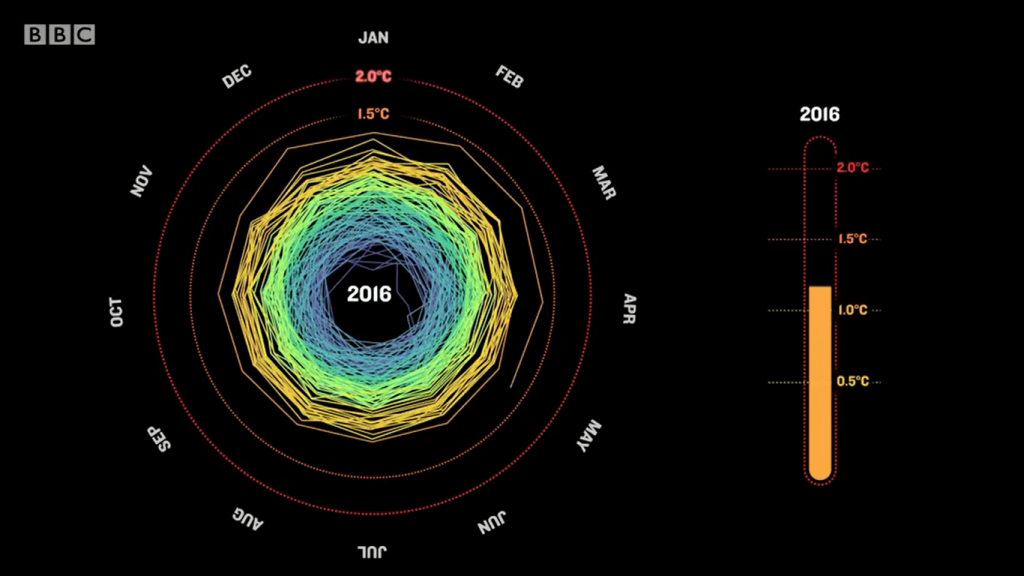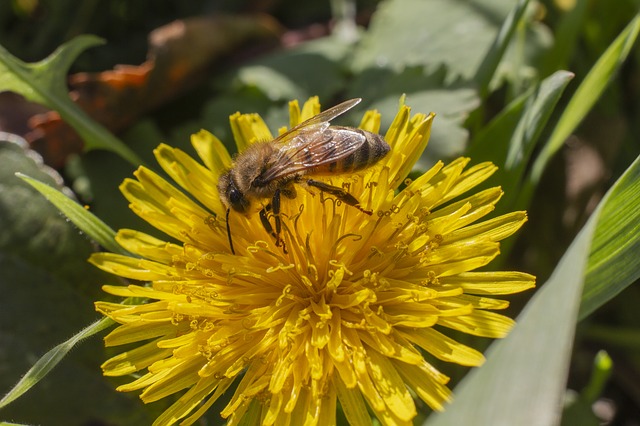Which Reading research publications got the most attention across the globe in 2019? We’ve scoured Altmetric data to bring you the top ten most talked about Reading-authored papers of the past year.

1. Turning up the heat on our health

Wildfires in California and Australia, floods in Yorkshire – the effects of climate change have been at the forefront of global attention this year. Perhaps no surprise then that our most popular publication of the year, once again, was the 2019 report of The Lancet Countdown: Tracking Progress on Health and Climate Change.
This year’s report warned that the life of every child born today will be profoundly affected by climate change, with populations around the world increasingly facing extremes of weather, food and water insecurity, changing patterns of infectious disease, and a less certain future. If we do nothing to alter its course, this new era will come to define the health of people at every stage of their lives.
However, limiting the global average temperature rise to well below 2ºC would transform the health of a child born today for the better, throughout their lives.
Placing health at the centre of the coming transition will pay huge dividends for the public and the economy, with cleaner air, safer cities, and healthier diets. But if we’re to change course, we need bold new approaches to policy making, research, and business, the report concludes.
The research involved Reading’s Professors Elizabeth Robinson and Nigel Arnell alongside leading doctors, academics and policy professionals from 27 organisations.
Read our blog and public lecture by Professor Robinson on climate change and health.

2. Go organic to save the planet? It’s not as simple as that

You’d assume that buying organic food must always be the better choice for the environment. But this is not the case, according to the second most talked-about Reading-authored paper of 2019.
A team of researchers including Reading’s Dr Philip Jones, led by Cranfield University, looked at how much greenhouse gas was produced from farming different types of grain, vegetable and livestock using both conventional and organic methods. Their results, published in Nature Communications, actually shows that because organic yields are generally lower, more land is needed to produce the same amount of crops or livestock.
In fact, the study estimates that feeding the population of England and Wales alone would need more than 7 million hectares of land overseas, nearly five times the area currently used. This could lead to 70% more greenhouse gas emissions from having to import more food and from conversion of carbon-storing grasslands to crop production.
What’s more, some organic crops such as beans, potatoes and oats actually produce higher greenhouse gas emissions per tonne than on conventional farms (though others such as oilseed rape, rye and wheat were more efficient under organic production.)
Read Professor Tom Oliver’s blog about this research
3. Saturated fats aren’t always bad for us

World Health Organization guidelines recommend that we cut down on saturated fats in our diet and replace them with polyunsaturated and monounsaturated fatty acids (for example swapping butter for margarine).
But research co-authored by Reading’s Professor Ian Givens challenges this advice. The BMJ paper, our third most talked about of the year, says that the WHO guidelines don’t take into account evidence that not all saturated fats are equal when it comes to their health effects. In fact these health effects depend on which foods the fats come from and which particular fatty acids they contain, the authors say.
A wholesale reduction of fatty acids in our diet could actually weaken the intended health-improving effects of the WHO guidelines. People could end up excluding foods from their diets that are an important source of nutrients which can prevent disease and improve health.
The authors say: “We’re concerned that, based on several decades of experience, a focus on total saturated fat might have the unintended consequence of misleading governments, consumers, and industry towards promoting foods low in saturated fat but rich in refined starch and sugar.
“We strongly recommend a more food based translation of how to achieve a healthy diet and reconsideration of the draft guidelines on reduction in total saturated fatty acids.”

4. Healthy people don’t benefit from gluten-free diets

People with healthy guts who avoid gluten by choice probably get no health benefits from doing so, according to our fourth most popular paper of the year.
The study, published in Gastroenterology and led by the University of Sheffield, found that people without coeliac disease or gluten insensitivity who took part in a randomised control trial did not report any stomach problems associated with gluten consumption, compared to a gluten-free control group.
Co-author Dr Paola Tosi, Senior Research Fellow from the University of Reading, commented: “It appears that gluten is often unjustifiably given the role of the bad guy in our diet, while gluten containing cereals, particularly when wholegrain, represent an important source of protein, fibre and micronutrients.”
Read our news story on this research.

5. Buckle up for future flights

Climate change could make severe in-flight air turbulence up to three times more likely by 2050-80 by increasing a process called vertical wind shear in the jet stream, according to research led by Professor Paul Williams, Simon Lee and Dr Thomas Frame, published in Nature and our fifth biggest paper of the year.
The study showed that whilst the temperature difference between Earth’s poles and the equator is narrowing at ground level because of climate change, the opposite is happening at 34,000 feet – typical aeroplane cruising altitude.
The jet stream is driven by these temperature differences, and the strengthening trend at cruising altitudes is causing an increase in turbulence-driving wind shear.
Read our news story about the research and find out more about Paul Williams’ work on turbulence in this blog and video.

6. Tracing one billion years of plant evolution

A huge 9-year study of the genetics of 1,100 plants to trace the plant ‘family tree’ across a billion years is number 6 on our list. Reading’s Kalman Konyves from the University of Reading herbarium is one of the authors named on the paper, published in Nature.
The One Thousand Plant Transcriptomes Initiative involves a global collaboration of scientists who are examining how planet earth’s plant species, genes and genomes diversified across their 1-billion-year history. The findings give new insights into plants which could yield new medicines or lead to improvements in crops.
Specimens from the University of Reading’s Herbarium were used in the project.

7. Mapping past ocean warming helps predict future sea level rise

Reading climate scientist Professor Jonathan Gregory has helped reconstruct 150 years of ocean temperature change from 1871 to 2017, completing a picture that previously only went back to the 1950s.
Published in the journal PNAS, the University of Oxford-led research team calculated global warming of the oceans at 436 x 10²¹ Joules.
The findings provide evidence that oceans are absorbing most of the excess energy in the Earth’s climate system caused by human-created greenhouse gas emissions.
Professor Gregory, who is lead author of chapters dealing with sea-level rise and ocean observation for three Intergovernmental Panel on Climate Change (IPCC) reports, said: “Understanding the way heat is transported around the oceans is important to give us confidence in predicting sea level rises that could be caused by climate change in the future.”
Read our news story on the research.

8. Creative ways to communicate climate change

In eighth place is an article by Professor Ed Hawkins, creator of the now world-famous climate stripes which have been displayed across the globe from the ties of US weather anchors to on stage at the Reading Festival.
In his article, published in the Bulletin of the American Meteorological Society, Professor Hawkins discusses his animated global temperature spiral, one of the first climate graphics to ‘go viral’ when it was seen by millions of people online and by more than a billion people when it was used in the opening ceremony of the 2016 Rio Olympics.
Professor Hawkins explains the idea, design, and communication aspects that led to the successes of the graphic and highlights the benefits to scientists of engaging actively online and openly sharing their creative ideas.
Find out more about the global impact of Professor Hawkins’ warming stripes.

9. City gardens are havens for struggling bees

Cities could provide an unexpected lifeline for pollinators, as they face increasing pressures on agricultural land. That’s according to our 9th most popular paper of the year, co-authored by Professor Simon Potts.
Bees are in decline because of loss of wild habitats and the use of pesticides. But the city-wide research revealed that gardens and allotments are conservation havens for bees and other pollinating insects. Weeds growing in these spaces are also a much-needed food source for them, the study showed, and brambles, buttercups and dandelions are amongst pollinators’ favourite flowers.
Authors of the Nature Ecology and Evolution paper recommend that green spaces should be managed and improved and others, such as roadside verges, should be added to help our pollinators.
Professor Potts says: “By assessing all major urban land uses for the first time, we found that we are not only undervaluing the importance of gardens and allotments, but also completely missing the opportunity to use less obvious greenspaces that are abundant in cities.
Making simple changes to the way these spaces are managed could unlock the potential of cities to be important places for pollinator conservation.”

10. Cow genetics tells a story of the fall of empires

The ancient history of cattle has been revealed by an international team of geneticists and archaeologists in our 10th most talked about paper of 2019, published in Science.
By unravelling the genetic code of wild and domestic cattle sampled across 8,000 years, the team were able to see changes to the genetics of cattle across time and space, and how these might interact with events in human prehistory.
The work highlights a dramatic mixing of genetics from ancient cattle from the east, the zebu (see image), with the entirely separate earliest cattle – Bos taurus – around 4,000 years ago. This could be linked to a major drought across the greater Near East, at which time the world’s first empires in Mesopotamia and Egypt collapsed.
The researchers suggest that ancient herders may have bred the Bos taurus cattle with arid-adapted zebu to make herds more resilient to the changing climate.
Led by population geneticists from Trinity College Dublin, the research involved Reading archaeologist Dr Robin Bendrey.

The Altmetric Attention Score (shown in the badges above) is a weighted count of all of the online attention Altmetric have found for an individual research output. This includes mentions in public policy documents and references in Wikipedia, the mainstream news, social networks, blogs and more. For this blog we’ve featured the top ten highest-scoring publications with a Reading-affiliated author published between 1 January and 20 December 2019.

